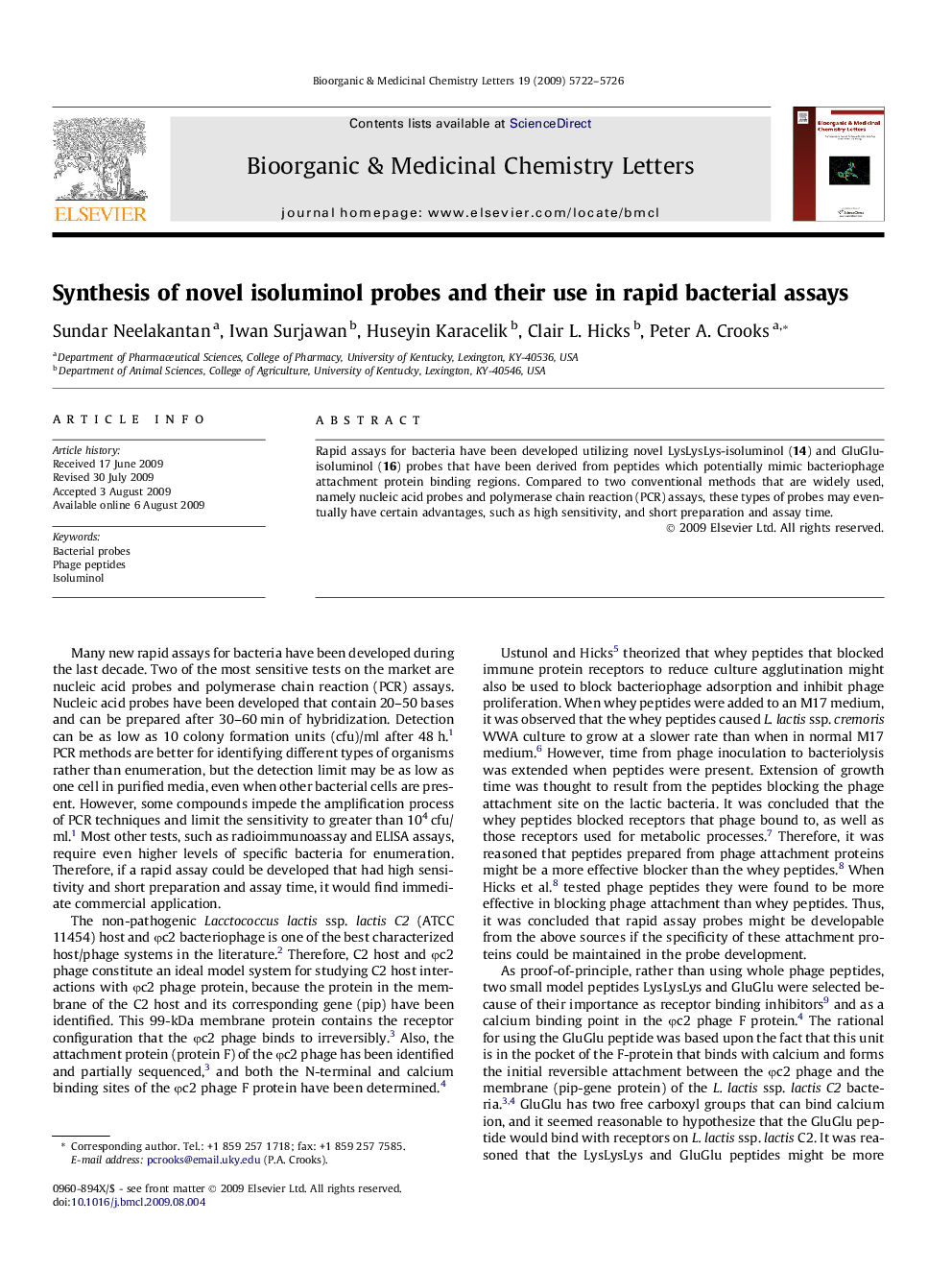| Article ID | Journal | Published Year | Pages | File Type |
|---|---|---|---|---|
| 1371882 | Bioorganic & Medicinal Chemistry Letters | 2009 | 5 Pages |
Rapid assays for bacteria have been developed utilizing novel LysLysLys-isoluminol (14) and GluGlu-isoluminol (16) probes that have been derived from peptides which potentially mimic bacteriophage attachment protein binding regions. Compared to two conventional methods that are widely used, namely nucleic acid probes and polymerase chain reaction (PCR) assays, these types of probes may eventually have certain advantages, such as high sensitivity, and short preparation and assay time.
Graphical abstractRapid assays for bacteria have been developed utilizing novel LysLysLys-isoluminol (14) and GluGlu-isoluminol (16) probes. Compared to two conventional methods that are widely used, namely nucleic acid probes and polymerase chain reaction (PCR) assays, these current probe assays may have certain advantages, such as high sensitivity, and short preparation and assay time.Figure optionsDownload full-size imageDownload as PowerPoint slide
